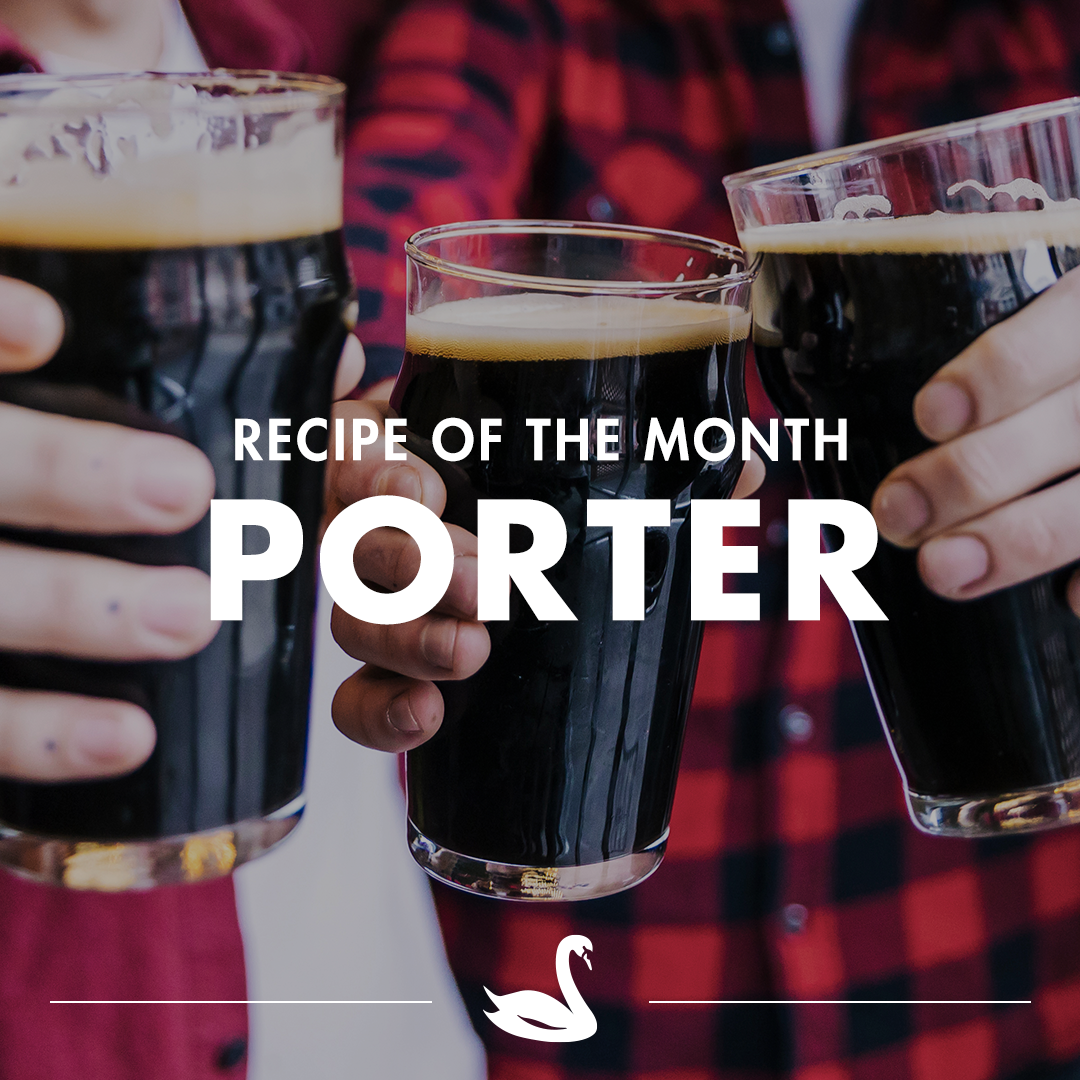Recipe of the month – Porter

Porter originated in London around 3 centuries ago, so it has a quite long history. Where does the name come from? Well, it became very popular among the porters, who worked at the local markets and delivered those products to the pubs. According to beer-historians the style evolved from Brown ales, that were widespread back in those days. Since then Porter is continuously developing, in terms of ingredients, technology and of course drinkers taste. As many other styles, Porters disappeared after the world wars and a they have been also ascended with the start of the craft beer era.
Back in the 19th century Porters were widely-exported, first in Europe and later to the US. The English version – that is usually soft, sweet and caramelly – hasn’t changed much, unlike its foreign variants. The American Porter is stronger, has higher gravity and not surprisingly it’s also hoppier. In the Baltic countries, where German lager brewing dominated, it became a bottom-fermented, high ABV, dark beer, the Baltic Porter. And the story of the Russian version is related to the import to St. Petersburg, supplying the needs of the British diplomatic community, especially after daughter of Queen Victoria married to the Czar. That style is known today as “Imperial Stout”. In those days Porter and Stout has no prominent difference, and both expression were used interchangeably. If you want to know more about that topic, check out our other article.
Grain bill:
My preference as base of the grist is our Ale malt, with some addition of Munich for the fuller rich malt character. Special malt varieties are essential for this style. Crystal malts will help in addition of caramel flavors and residual sweetness, which is required to balance the bitterness of the roasted grains and hops. A mid-color crystal malt should work well. As for darker grains I’m pleased to introduce our brand new product, the PlatinumSwaen©BrownPorter. Historically Porters were brewed from brown malt, which is a very dark base malt. We also kilned this product in our roaster, at lower temperature, in order to avoid burnt flavours, so technically it’s not roasted. You can increase its ratio vs roasted varieties, in order to have a smoother result. A single step mash for 60 minutes in the middle should work well (67⁰C / 153⁰F).
The Swaen malts
Swaen©Ale
Quantity: 4,0 kg – 8,8 lb
Colour: 7 EBC- 2,6 lov
Ratio: 70%
Swaen©Munich Light
Quantity:0,7 kg – 1,5 lb
Colour: 14 EBC – 5,3 lov
Ratio: 12%
GoldSwaen©Munich Light
Quantity: 0,4 kg – 0,88 lb
Colour: 100 EBC – 38 lov
Ratio: 7%
PlatinumSwaen©BrownPorter
Quantity: 0,3 kg – 0,66 lb
Colour: 425 EBC – 160 lov
Ratio: 5%
BlackSwaen©Chocolate B
Quantity: 0,2 kg – 0,44 lb
Colour: 900 EBC – 339 lov
Ratio: 4%
BlackSwaen©Black Extra
Quantity: 0,1 kg – 0,22 lb
Colour: 1300 EBC – 490 lov
Ratio: 2%
Hops: As in Porters the focus is more on malt flavours, you don’t need to think a lot about what to add. I would recommend traditional English varieties, like Fuggles, EKG, Northern Brewer or as you see in the recipe, Challenger. For an American version feel free to switch to local hops. They can be allocated evenly for bittering and aroma purpose. Please note your hops need to have enough character to compete with bitter flavours of roasted malt.
Variety: Challenger
Quantity: 28 g – 1 oz
Lenght: 60 min
Alpha acid: 9%
IBU: 27
Variety: Challenger
Quantity: 28 g – 1 oz
Lenght: 10 min
Alpha acid: 9%
IBU: 10
Yeast: Any typical English or American-style ale yeast should work well in a porter. For a fuller body we would recommend to use a lower attenuative strain. To have the best result, ferment at 20°C / 68°F. As for many other styles, the higher is your ABV, the longer aging is required.
Dry
Fermentis Safale S-04
Mangrove Jack M36 Liberty Bell Ale
Liquid
WLP002 English Ale
Wyeast 1028 London Ale
Results:
Batch size: 23 l (6 gallon)
Efficiency: 75%
OG: 1,055
FG: 1,012
ABV: 5,6%
Bitterness: 37 IBU
Colour: 29 SRM
Carbonation: 2,2
pH: 5,0
Appearance: Deep brown colour, creamy foam
Taste: PlatinumSwaen©BrownPorter, paired with other specialties definitely brings you what you need for a Porter – an intense range of chocolate, coffee and caramel flavours, but without the burnt, roasty aroma.
Food pairing: Beef dishes, BBQ